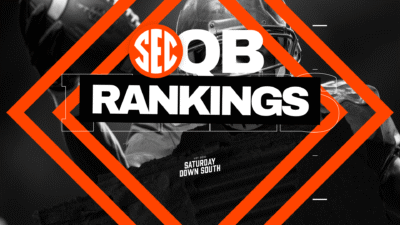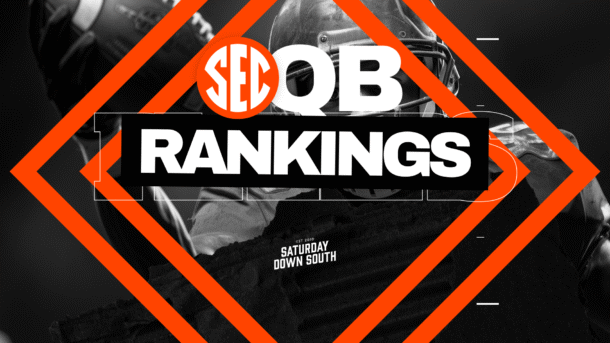College stadiums are more than just venues; they’re monuments to their home programs and as big a part of a program’s culture as the players, coaches and fans.
Read up on the history behind all seven SEC West stadiums, which represent some of the biggest, grandest and most and most significant stadiums in all of college football:
ALABAMA — BRYANT-DENNY STADIUM
Date opened: 1929
Namesake: Named for former Alabama coach Paul “Bear” Bryant and former University of Alabama president George H. Denny.
Major expansions: Stadium expansions in 1946, 1961, 1966, 1988, 1998, 2006 and most recently 2010, when South end zone was expanded to raise capacity above 100,000.
Interesting facts: Original capacity was 12,000 fans; originally named Denny Stadium (Denny was president of UA when the stadium opened).
ARKANSAS — D.W.R. RAZORBACK STADIUM
Date opened: 1938
Namesake: Named for Businessman, philanthropist and war hero Donald W. Reynolds, whose foundation financed helped fund the stadium.
Major expansions: Expanded in 1947, 1950, 1965, 1969, 1975 (addition of Broyles athletic center), 1985, 2001 (addition of 21,000 seats, addition “Championship Alley” and “All-American Alley,” enclosure of South end zone and expansion of press box, addition of skyboxes and club seating, construction of Bogle Academic Center), 2012 (addition of new 38′ x 167′ video display board in the North end zone).
Interesting facts: Original capacity was 13,500; Stadium installed astroturf in 1969, returned to natural grass in 1994 then finally settled on synthetic turf in 2009.
AUBURN — JORDAN-HARE STADIUM
Date opened: 1939
Namesake: Named for Ralph “Shug” Jordan, Auburn’s all-time winningest coach, and Clifford Leroy Hare, a former Auburn football player, Southern Conference president and chairman of Auburn’s Faculty Athletic Committee. (The field is named Pat Dye field after legendary Auburn coach Pat Dye.)
Major expansions: Expansions in 1949, 1955, 1960, 1970, 1980, 1987, 2004; addition of East and West upper decks in 1980 and 1987; addition of 30′ x 74′ LED video board in South end zone in 2007.
Interesting facts: The stadium remains one of the 10 largest on-campus stadiums in the country; when filled to capacity, the stadium holds more people than all but four cities in Alabama; originally named Auburn Stadium then Cliff Hare Stadium (1949).
LSU — TIGER STADIUM
Date opened: 1924
Namesake: Named after LSU’s mascot.
Major expansions: Expanded seating in 1931, 1936 (North end zone enclosed), 1967 (South end zone enclosed), 1978 (addition of first upper deck), 1994 (slight seating reduction to install visitors’ locker room, 2000, 2004 (addition of Stadium Club), 2012.
Interesting facts: One of the 10 largest stadiums in the world by capacity; stadium contained dormitories for nearly 60 years beginning in 1936, as there was money in Louisiana’s state budget for added dormitories on campus but not for a stadium expansion; original capacity was 12,000.
MISSISSIPPI STATE — DAVIS WADE STADIUM
Date opened: 1914
Namesake: Named for Floyd Davis Wade Sr., a longtime MSU supporter who helped fund much of the stadium’s 2001 expansion.
Major expansions: Expansions in 1928, 1936, 1948, 1983 (end zone seating removed, capacity lowered), 1986 (added seating and stadium’s first computerized scoreboard), 1997 (replaced scoreboard with a Sony JumboTron), 2002 (added club seating, skyboxes and upper-deck seating), 2008 (addition of new 48′ x 112′ LED video display board), 2014 (added seating, sealed off North end zone).
Interesting facts: Fifth-oldest stadium in college football and second-oldest in the FBS; originally named New Athletic Field; name changed to Davis Wade stadium in 2001;
OLE MISS — VAUGHT-HEMINGWAY STADIUM
Date opened: 1915
Namesake: Named for Judge William Hemingway, former chairman of Ole Miss’ committee on athletics and John Vaught, legendary Ole Miss football coach.
Major expansions: 1941, 1950, 1980, 1988 (addition of new club level and new press box), 1998, 2002 (enclosed South end zone, added luxury boxes and upper deck), 2015-16 (enclosure of North end zone).
Interesting facts: Was the first SEC stadium to install FieldTurf (2009); will become the state’s largest facility when ongoing expansion is completed in 2016.
TEXAS A&M — KYLE FIELD
Date opened: Opened in 1904, completed in 1927
Namesake: Named for Edwin Jackson Kyle, a Texas A&M graduate and former president of A&M’s general athletics association.
Major expansions: 1929, 1953 (partial upper deck installed), 1967 (expanded upper deck), 1980 (third deck added), 1999 (Bernard C. Richardson Zone added), 2003 (Bright football complex added), 2013-15 (reconstruction of East and West sides of the stadium).
Interesting facts: A 1921 meeting between A&M and the University of Texas at Kyle Field was the first football game to offer a live, play-by-play broadcast; the 2014 capacity (since reduced by ongoing reconstruction) made Kyle Field the fifth-largest non-racing stadium in the world; Oct. 11, 2014 loss to Ole Miss marked highest attendance in SEC history (reportedly more than 110,000 fans).
A former newspaper reporter who has roamed the southeastern United States for years covering football and eating way too many barbecue ribs, if there is such a thing.






